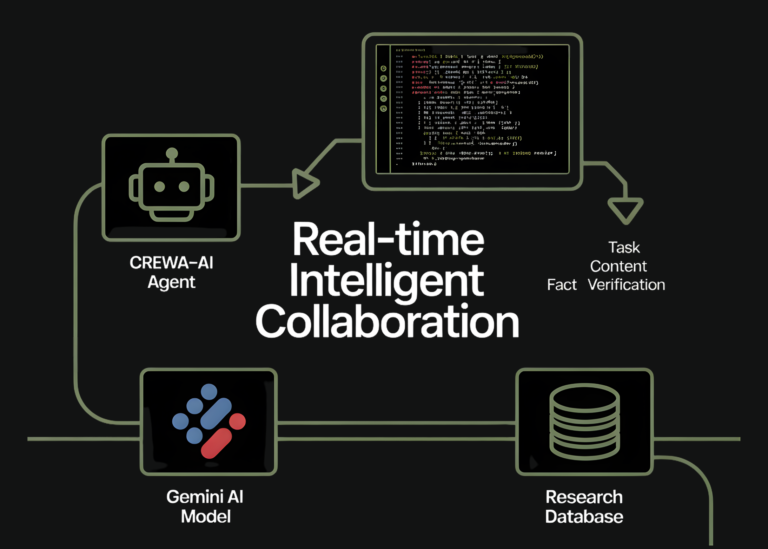In today’s hyper-competitive job market, your resume isn’t just a summary of your experience—it’s your personal marketing document, your first impression, and often, your only chance to pass through the digital gatekeepers known as Applicant Tracking Systems (ATS). But here’s the good news: AI is no longer your enemy—it’s your greatest ally.
Gone are the days of guessing which keywords to include or struggling with formatting. In 2025, AI-powered resume tools can analyze thousands of successful resumes, decode job descriptions, and even rewrite your bullet points to match what hiring managers—and algorithms—want to see.
This guide reveals the top 5 AI-powered resume tips that will transform your application from “just another file” to a standout, interview-winning document. Whether you’re a recent graduate, a mid-career professional, or returning to the workforce, these strategies will give you a decisive edge.
Why AI-Powered Resumes Are Non-Negotiable in 2025
Before diving into the tips, it’s crucial to understand why AI has become essential in resume writing.
The Rise of ATS (Applicant Tracking Systems)
Over 99% of Fortune 500 companies and 75% of all recruiters now use ATS to filter resumes before a human ever sees them. These systems scan for:
- Relevant keywords
- Job-specific skills
- Consistent formatting
- Career progression
If your resume doesn’t speak the “language” of the ATS, it gets rejected—silently and instantly.
Enter AI: Your Personal Resume Strategist
Modern AI tools like Rezi, Kickresume, Teal, and Resume.io go beyond simple templates. They:
- Parse job descriptions to extract hidden keywords
- Score your resume against industry benchmarks
- Suggest action verbs and quantifiable achievements
- Optimize layout for both ATS and human readability
In short: AI doesn’t replace your experience—it amplifies it.
Tip #1: Use AI to Decode Job Descriptions and Extract Keywords
The #1 mistake job seekers make? Sending the same generic resume to every employer. In 2025, customization isn’t optional—it’s mandatory.
How AI Analyzes Job Postings
AI tools can scan a job description and instantly identify:
- Hard skills (e.g., “Python,” “Google Analytics,” “Project Management”)
- Soft skills (e.g., “collaborative,” “strategic thinker”)
- Industry jargon (e.g., “KPIs,” “agile methodology,” “ROI optimization”)
- Required certifications (e.g., “PMP,” “Google Ads Certified”)
Actionable Strategy: The 3-Step AI Keyword Integration Process
Step 1: Paste the Job Description into an AI Analyzer
Use tools like Teal’s Job Application Tracker or Rezi’s AI Keyword Scanner. Within seconds, you’ll get a list of priority keywords ranked by importance.
Example:
Job Title: Digital Marketing Manager
AI-Extracted Keywords:
- SEO/SEM
- Email marketing automation
- A/B testing
- Google Analytics 4 (GA4)
- Conversion rate optimization (CRO)
Step 2: Weave Keywords Naturally into Your Resume
Don’t just list keywords—embed them in context. Compare these two bullet points:
❌ Managed digital marketing campaigns.
✅ Increased lead generation by 42% through SEO-optimized content and GA4-driven A/B testing of email marketing automation workflows.
The second version includes 4 high-value keywords while demonstrating quantifiable impact.
Step 3: Prioritize Based on Relevance
Not all keywords are equal. Focus on:
- Must-have skills (mentioned 3+ times in the job post)
- Tools/software (e.g., “HubSpot,” “Tableau”)
- Certifications (if required)
💡 Pro Tip: Save your “keyword bank” for each industry. A marketing resume will differ vastly from a data science one—even for the same person.
Tip #2: Let AI Rewrite Your Bullet Points for Maximum Impact
Weak bullet points are the #1 reason resumes get ignored. AI can transform vague statements into achievement-driven, metrics-powered narratives.
The Problem with Traditional Bullet Points
Most resumes suffer from:
- Passive language (“Responsible for…”)
- Lack of metrics (“Helped improve sales”)
- Generic claims (“Team player with strong communication skills”)
How AI Enhances Your Experience
Advanced AI tools use natural language processing (NLP) to:
- Replace weak verbs with power words (“managed” → “spearheaded”)
- Suggest relevant metrics (even if you didn’t track them)
- Align phrasing with industry standards
Actionable Strategy: The PAR Formula + AI
Use the Problem-Action-Result (PAR) framework, enhanced by AI:
- Identify the Problem: What challenge did you face?
- Describe Your Action: What did you specifically do?
- Quantify the Result: What was the measurable outcome?
Before AI:
Handled social media accounts.After AI (using Rezi or Kickresume):
Revitalized stagnant social media presence by developing a data-driven content calendar, resulting in a 150% increase in engagement and 28% follower growth in 3 months.
Real-World Example: From Intern to Impact
Original Bullet Point:
Assisted the marketing team with email campaigns.
AI-Optimized Version:
Collaborated with senior marketers to design and deploy 12+ segmented email campaigns using Mailchimp, achieving an average open rate of 34% (industry benchmark: 21%) and generating $18K in direct revenue.
📌 Key Insight: AI doesn’t invent facts—it helps you articulate your real contributions in the language employers value.
Tip #3: Optimize Formatting for Both ATS and Humans
A beautifully designed resume means nothing if the ATS can’t read it. AI solves this dual challenge.
Common Formatting Mistakes That Break ATS
- Columns and text boxes (ATS reads left-to-right, top-to-bottom)
- Graphics, icons, or logos (scanned as blank space)
- Uncommon fonts (Stick to Arial, Calibri, or Times New Roman)
- Headers/footers (Many ATS ignore content here)
How AI Ensures ATS Compatibility
Tools like Rezi and Zety offer:
- ATS-safe templates pre-validated against major systems (Greenhouse, Workday, Taleo)
- Real-time scoring (e.g., “Your resume is 92% ATS-friendly”)
- Auto-correction for problematic elements
Actionable Strategy: The 5-Second Human Test
Even if ATS approves your resume, a hiring manager should grasp your value in 5 seconds. AI helps you achieve this with:
1. Clear Section Headings
Use standard labels:
✅ Work Experience
✅ Education
✅ Skills
❌ “My Journey” or “Where I’ve Been”
2. Consistent Date Formatting
- Correct: Jan 2022 – Present
- Avoid: January 2022 to Now
3. Strategic White Space
AI tools balance text density so your resume isn’t overwhelming. Aim for:
- 1-inch margins
- 1.15 line spacing
- Bullet points no longer than 2 lines
💡 Pro Tip: Always export your final resume as a PDF—unless the job posting specifies “.docx.” Some older ATS struggle with PDFs.
Tip #4: Tailor Your Resume for Each Application Using AI
Mass-applying with one resume is a recipe for rejection. AI makes hyper-personalization fast and scalable.
The Power of Dynamic Tailoring
Instead of rewriting your entire resume, AI lets you:
- Swap in relevant skills
- Adjust summary/profile statements
- Reprioritize work experience
Actionable Strategy: Build a “Master Resume” + AI Variants
Step 1: Create a Master Resume
Include every skill, project, and achievement from your career. Don’t worry about length—this is your private database.
Step 2: Use AI to Generate Role-Specific Versions
Tools like Teal let you:
- Upload your master resume
- Paste a job description
- Click “Tailor Resume”
- Download a customized version in seconds
Example:
- Master Resume: Includes both “Graphic Design” and “Data Analysis” skills
- For Marketing Role: AI highlights design tools (Canva, Adobe Creative Suite)
- For Analyst Role: AI emphasizes SQL, Excel, and dashboard creation
Step 3: Save and Track Versions
Name files clearly:JohnDoe_MarketingManager_BestBuy.pdfJohnDoe_DataAnalyst_Google.pdf
This prevents accidental mix-ups and shows intentionality.
📌 Key Insight: Tailoring isn’t about deception—it’s about relevance. You’re helping the recruiter see why you fit this role.
Tip #5: Use AI to Audit and Score Your Resume Before Sending
Never hit “submit” without a final quality check. AI provides an objective, data-driven review.
What AI Resume Scanners Evaluate
Top tools analyze:
- Keyword match rate (% alignment with job description)
- Readability score (Flesch-Kincaid grade level)
- Achievement density (ratio of results vs. responsibilities)
- ATS compatibility
Actionable Strategy: The 3-Pass AI Audit
Pass 1: Keyword Optimization (Rezi or Jobscan)
- Target: 80%+ keyword match
- Fix: Add missing hard skills, adjust phrasing
Pass 2: Impact Enhancement (Kickresume or Resume.io)
- Target: At least 3 quantified achievements
- Fix: Replace passive language, add metrics
Pass 3: Formatting & Readability (Grammarly + Zety)
- Target: Grade 8–10 readability, clean layout
- Fix: Shorten sentences, standardize headings
💡 Pro Tip: Run your resume through multiple AI tools. Each has unique strengths—Rezi excels at ATS, while Kickresume shines in design.
Bonus: Top 5 AI Resume Tools in 2025 (Compared)
| Rezi | ATS optimization | ★★★★★ | Free + Paid | AI-powered keyword extraction |
| Teal | Job tracking + tailoring | ★★★★☆ | Free + Paid | One-click resume tailoring |
| Kickresume | Design + content | ★★★★☆ | Free + Paid | AI writer with industry templates |
| Zety | Beginners | ★★★★☆ | Paid | Real-time resume scoring |
| Resume.io | Speed & simplicity | ★★★☆☆ | Free + Paid | 5-minute resume builder |
🔍 Recommendation: Start with Rezi (free) for ATS safety, then refine with Kickresume for phrasing.
Frequently Asked Questions (FAQs) – Top 5 AI-Powered Resume Tips 2025
Is it ethical to use AI for resume writing?
Yes, absolutely. AI is a tool—like a spellchecker or grammar guide. It helps you communicate your real experience more effectively. You’re not fabricating skills; you’re presenting them in the best light. Over 60% of professionals now use AI in some part of their job search.
Will recruiters know I used AI?
No. Modern AI tools produce natural, human-sounding text. In fact, many recruiters prefer AI-optimized resumes because they’re clearer, more concise, and better aligned with job requirements.
Can AI help if I have employment gaps?
Yes! AI can help you:
- Reframe gaps as “professional development periods”
- Highlight freelance or volunteer work
- Focus on skills over chronology
Use phrases like: “2023–2024: Focused on upskilling in data analytics through certified courses (Google Data Analytics, Coursera)”
Do free AI resume tools work as well as paid ones?
For basics, yes. Free tools like Rezi and Teal offer robust ATS optimization. However, paid versions unlock:
- Advanced metrics suggestions
- Unlimited downloads
- Premium templates
Start free, upgrade only if needed.
How often should I update my AI-optimized resume?
Before every application. Even if you’re not job hunting, refresh your “master resume” quarterly with new skills or achievements. This ensures you’re always ready when opportunities arise.
Can AI help with cover letters too?
Definitely! Tools like Kickresume and Teal generate tailored cover letters using the same job description you used for your resume. Just ensure you personalize the opening/closing lines.
What if the AI suggests skills I don’t have?
Never lie. Only include skills you can confidently discuss in an interview. If AI suggests “Python” but you only used it once, phrase it as: “Basic Python scripting for data cleaning (Pandas, NumPy)”.
Are AI resumes effective for creative fields (design, writing)?
Yes—with caveats. For creative roles, pair your AI-optimized resume with a strong portfolio. Use AI for the text, but let your work samples showcase originality.
Final Thoughts: Your Resume, Amplified by AI
In 2025, leveraging AI for your resume isn’t about replacing human effort—it’s about working smarter. By using technology to decode job descriptions, enhance your achievements, and ensure technical compatibility, you free up mental energy to focus on what truly matters: preparing for the interview.
Remember:
✅ Customize for every role
✅ Quantify your impact
✅ Prioritize clarity over creativity
✅ Audit before you send
Your next career breakthrough starts with a single document. Make sure it’s powered by the best tool available—AI.
🔔 Stay Ahead: Bookmark this guide and follow Smart AI Blog for more AI-powered career strategies, tool reviews, and job search hacks in 2025 and beyond.







